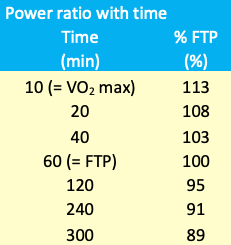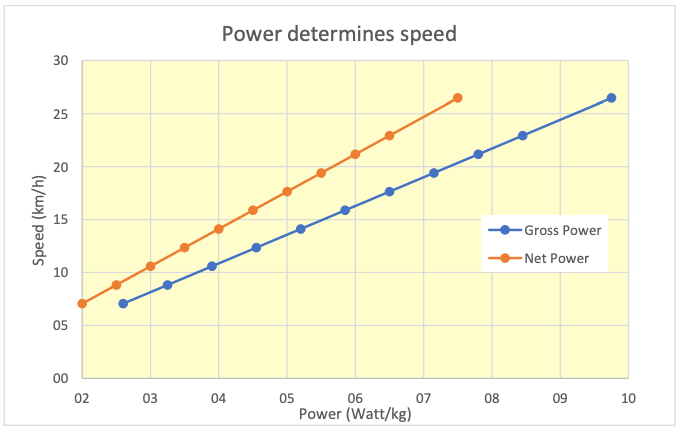How to analyze running power data

Many books and papers have been written on training plans, including such aspects as training goals, training modes, training paces and training mileage. Running with power provides us with new tools to optimize the training in real time and on a daily basis. In this paper we will discuss the two most important metrics that determine your running power and performance, i.e. the Functional Threshold Power (FTP) and the Energy Cost of Running (ECOR). More details can be found in our book ”The Secret of Running” (www.thesecretofrunning.com).
Functional Threshold Power (FTP)
The FTP is defined as the maximum amount of power (in Watt/kg body weight) that can be maintained during one hour. During 10 minutes, your maximum running power will be 13% higher than the FTP, the power-time relationship is given in the table below.

The FTP is the most important running metric as it directly determines the maximum power that you can maintain during a race. And the power determines your speed as given in the graph below.

As an example, author Hans has a net FTP of 4.31 Watt/kg (as measured by Stryd) and a gross FTP (as measured by Polar) of 5.6 Watt/kg, so he can maintain a speed of 15.2 km/h during one hour.
Obviously, your FTP is not a constant but it will depend on your fitness and training status. So you should monitor your power-time relationship during training sessions in order to assess the effect of the training and the resulting impact on your FTP. If all goes well, your FTP should increase and so should your speed! If not, you should change and optimize your training program.
Energy Cost of Running (ECOR)
When we compare the human body to a car, the FTP specifies the power of the engine and the Energy Cost of Running (ECOR) specifies the gas mileage. Obviously, it is very important to run economically and minimize the ECOR, so you can run faster at the same power. You can determine your ECOR on a daily basis by dividing the power (in Watt/kg) by the speed (in km/h). The resulting net ECOR (as measured by Stryd) should be in the order of 0.98 kJ/kg/km and the resulting gross ECOR (as measured by Polar) 1.27 kJ/kg/km. Of course, these numbers will not be the same for everyone. Your ECOR depends on many factors, including body posture, fuel mix and running form.
Generally, it is believed that the net ECOR of highly efficient elite runners could be as low as 0.90 kJ/kg/km, whereas the ECOR of inefficient joggers could be as high as 1.10 kJ/kg/km. Obviously, a lower ECOR means that you are running more economically and consequently you can run faster. So every runner should try to lower his ECOR! Unfortunately, we cannot change our body posture (apart from shedding excess body fat) and the fuel mix in our muscles (apart from carbo-loading before the marathon). The Kenyan elite runners share many advantages like slim calves, flexible hips and (relatively) long legs. So, the only factor that we can try to optimize is our running form.
Generally, it is believed that the net ECOR of highly efficient elite runners could be as low as 0.90 kJ/kg/km, whereas the ECOR of inefficient joggers could be as high as 1.10 kJ/kg/km. Obviously, a lower ECOR means that you are running more economically and consequently you can run faster. So every runner should try to lower his ECOR! Unfortunately, we cannot change our body posture (apart from shedding excess body fat) and the fuel mix in our muscles (apart from carbo-loading before the marathon). The Kenyan elite runners share many advantages like slim calves, flexible hips and (relatively) long legs. So, the only factor that we can try to optimize is our running form.

If you would like to purchase The Secret of Running (or the German version, Das Geheimnis des Laufens), you can do so at the bottom of store.stryd.com.

